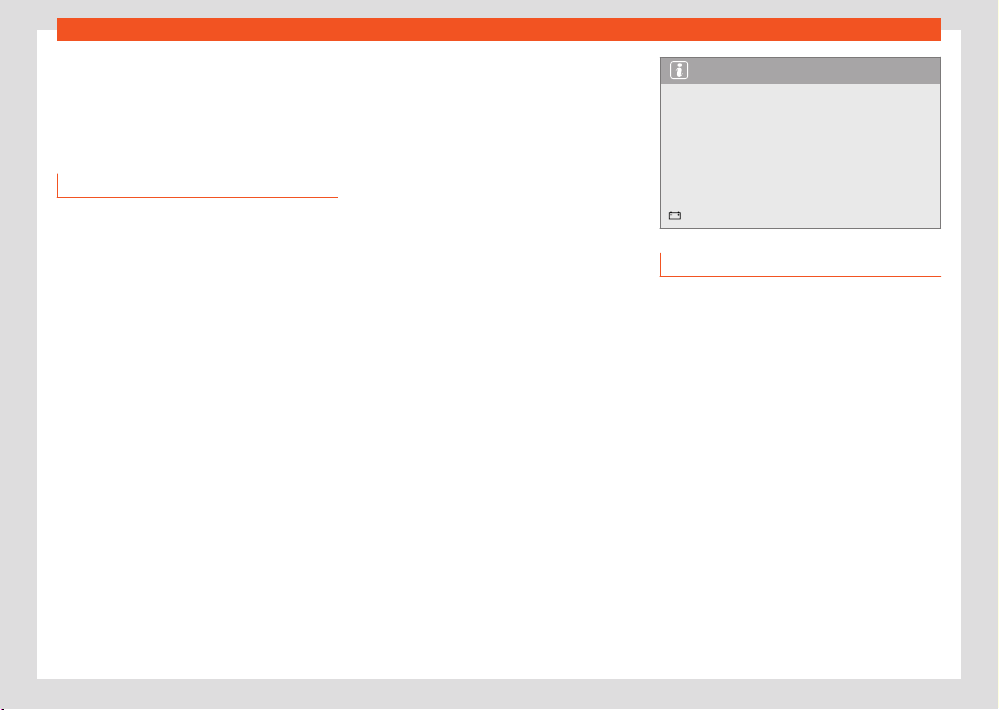Loading ...
Loading ...
Loading ...

Checking and r
efilling levels
343
Energy management
If the yellow warning lamp does not switch
o within 3 minut
es, seek professional assis-
tance.
Energy management
Optimisation of the starting capacity
The power management controls the distribu-
tion of electrical energy and thus helps to en-
sure that there is always enough power availa-
ble to start the engine.
If a vehicle with a conventional electrical sys-
tem is left parked for a long time, the battery
will gradually lose its charge because certain
electrical devices, such as the electronic gear-
box lock continues to draw current even when
the ignition is o. In some cases there may not
be enough power available to start the engine.
Your vehicle is equipped with an intelligent
power management system to control the dis-
tribution of electrical energy. This significantly
improves reliability when starting the engine,
and also prolongs the useful life of the battery.
The main functions incorporated in the power
management system are battery diagnosis,
residual current management and a dy-
namic power management system.
Battery diagnosis
The battery diagnosis function constantly reg-
isters the condition of the battery. Sensors de-
tect the battery voltage, battery current and
battery temperature. This enables the system to
calculate the current power level and charge
condition of the battery.
Residual current management
The residual current management reduces
power consumption while the vehicle is parked.
It controls the supply of power to the various
electrical devices while the ignition is switched
o. The system takes the battery diagnosis
data into consideration.
Depending on the power level of the battery,
switch o the individual electrical devices one
after the other to prevent the battery from los-
ing too much charge and to ensure that the
engine can be started reliably.
Dynamic power management
While the vehicle is moving, this function distrib-
utes the available power to the various elec-
trical devices and systems according to their
requirements. The power management ensures
that on-board systems do not consume more
electrical power than the alternator can sup-
ply, and thus maintains the maximum possible
battery power level.
Note
●
Neither is the power management system
abl
e to overcome the given physical limits.
Please remember that the power and useful
life of the battery are limited.
●
When there is a risk that the vehicle will not
start, the alternator power failure or low bat-
tery charge level warning lamp will be shown
›››page340.
Fl
at battery
Starting ability has first priority. Short trips, city
trac and low temperatures all place a heavy
load on the battery.
In these conditions a large amount of power is
consumed, but only a small amount is supplied.
The situation is also critical if electrical devices
are in use when the engine is not running. In this
case power is consumed when none is being
generated.
In these situations you will be aware that the
power management system is intervening to
control the distribution of electrical power.
When the vehicle is parked for long periods
If you do not drive your vehicle for a period
of several days or weeks, the power manage-
ment will gradually shut o the electrical devi-
ces one by one or reduce the amount of cur-
rent they are using. This limits the amount of
power consumed and helps to ensure reliable
Loading ...
Loading ...
Loading ...